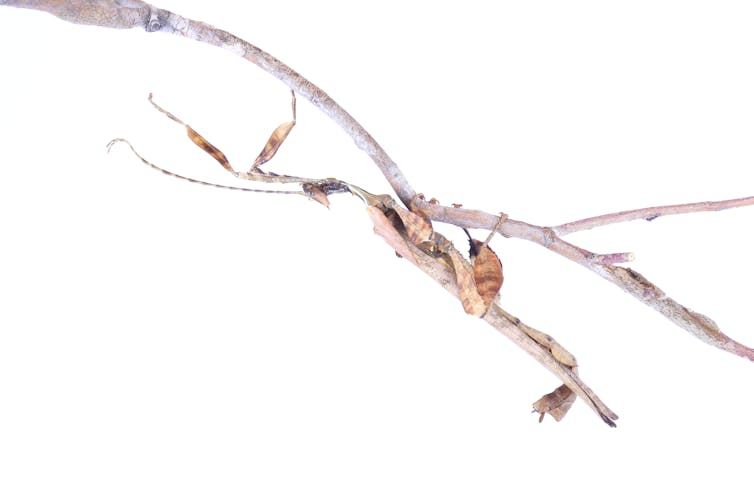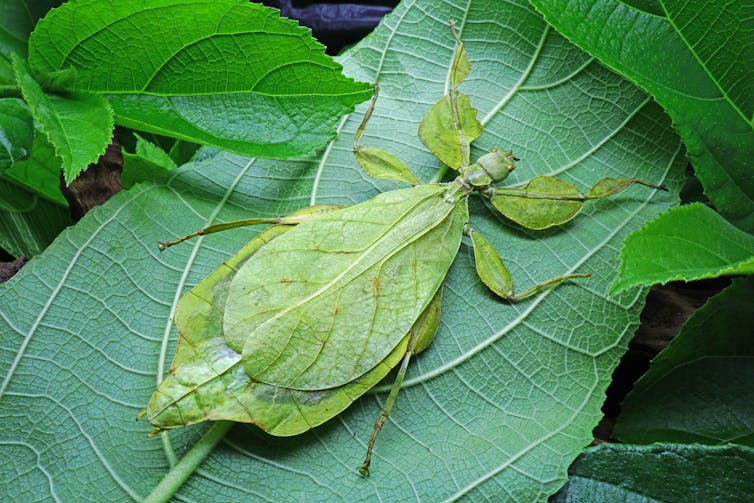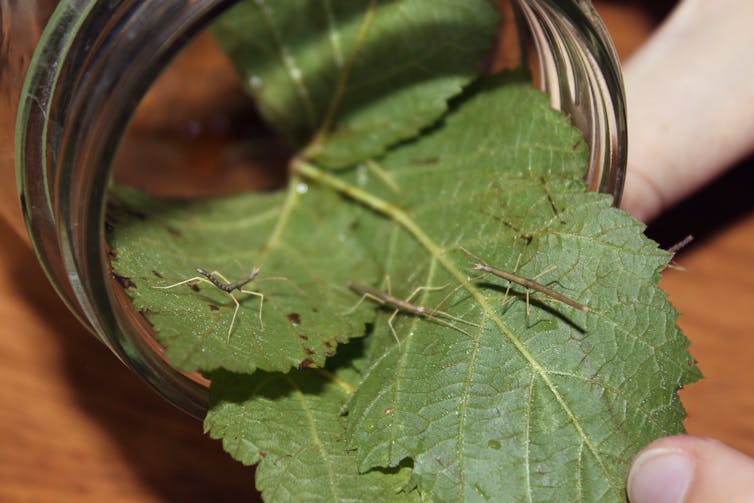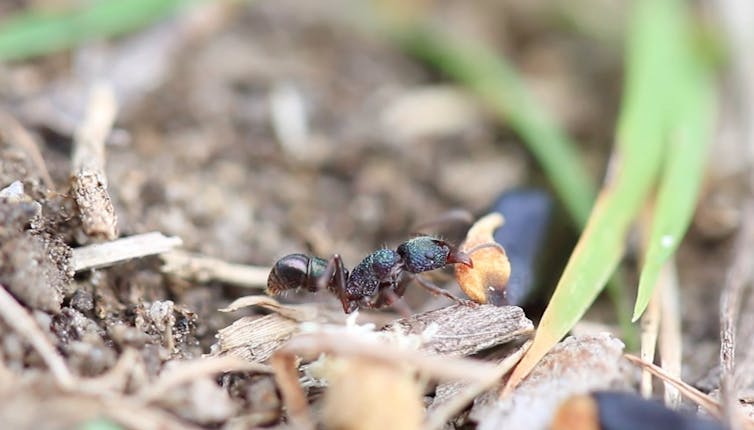
James O’Hanlon, Author provided
James O’Hanlon, University of New England
The key to a stick insect’s survival may be allowing their eggs to be eaten and excreted by birds, according to new Japanese research.
Phasmatodea – more commonly known as stick insects – were so named because they genuinely look just like sticks.
While some stick insects do look like the classic stick – mottled brown with elongated limbs – others look remarkably like green leaves. They even have intricate leaf-like veins in their broad green wings.

Shutterstock
But these new findings show that not only do these insects look like plants, they also behave like them – by using birds to disperse their offspring.
Surprisingly, researchers led by Kenji Suetsugu of Kobe University found that stick insect eggs can actually survive being digested by birds, and in some cases still successfully hatch.

Shutterstock
Read more:
How the hard work of wild animals benefits us too
They fed three eggs from three stick insect species to their main bird predator, the brown-eared bulbul. Within three hours, 5-20% of these eggs had been defecated and were completely intact.
Even more impressively, a few of these eggs subsequently hatched. This leads us to ask what would happen if an adult female was eaten by a bird. Would the eggs inside of unlucky stick insect survive the bird’s digestive system and stand a chance of making it out at the other end?
Creative transportation
Plants have evolved ingenious ways of moving their seeds across large distances. Some seeds are carried by the wind or ocean currents, or by animals. Bushwalkers will be very familiar with prickly seeds designed to attach to animal hair, as they are also annoyingly good at sticking to trousers.

Shutterstock
Many plants pack their seeds in delicious fruit which attracts animals with bright colours and alluring fragrances. When animals eat the fruit, some of the seeds make it through their digestive tract and are deposited far away.
This gives these seeds a better chance at survival, because they are not in competition with the parent plant.
This is a challenge that stick insects also face, as they’re not the most mobile twigs on the bush. Stick insects are slow and only move at night to avoid being seen by predators. Dispersal by birds helps avoid localised competition between generations.

James O’Hanlon, Author provided
But this isn’t where the similarities end. Some species of stick insect have eggs that are covered in long prickly spines that may have evolved to stick to animal fur, just like plant seeds.
There is even some evidence that stick insects arrived in Madagascar from somewhere on the other side of the Indian Ocean. This prompts the question of whether their eggs float across the vast seas like miniature coconuts.
Read more:
I have always wondered: why are some fruits poisonous?
Everyone wins
Stick insects and plants have also developed a mutually beneficial relationship with ants to disperse their eggs and seeds.
In Australia, we have a huge diversity of “myrmecochorous” plants (trees and shrubs whose seeds are picked up and carried by ants). These plants attract ants with “elaiosomes”, which are small structures on their outer surface packed full of nutritious ant food.
Some species stick insects’ eggs also have strange-looking structures on their outer surface. It turns out that these structures, called “capitula”, are also full of nutritious ant food. And sure enough, after the eggs are laid, ants will pick them up and carry them to their nests.
An ant’s nest is a surprisingly safe place for an egg or seed. In there, they are protected from fire, predators, parasites, and drying out.

James O’Hanlon, Author provided
(Exactly how the newly hatched stick insects escape from the ant nest is a mystery – for now.)
It appears stick insects may have taken more than just one leaf out plants’ book – they may be more “plant-like” than we had ever imagined.
James O’Hanlon, Postdoctoral research fellow, University of New England
This article was originally published on The Conversation. Read the original article.



